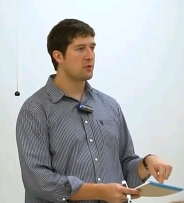Math 113B: Intro to Mathematical Modeling in Biology (English)
Course Information
This course is intended for both mathematics and biology undergrads with a basic mathematics background, and consists of an introduction to modeling biological problems using continuous ODE methods (rather than discrete methods as used in 113A). We describe the basic qualitative behavior of dynamical systems in the context of a simple population model and, as time allows, introduce other types of models such as chemical reactions inside the cell or excitable systems leading to oscillations and neuronal signals. Certain topics from linear algebra that are needed for this course are presented as well, so a linear algebra prerequisite is not necessary.
Mathematics Dept. | Physical Sciences Sch. | University of California, Irvine
Keywords: Mathematics,Biology,oridinary differential equations,qualitative behavior,dynamical systems,chemical reactions inside cells,neuronal signals,linear algebra,oscillation signals

- Author:
- German Andres Enciso Ruiz
- Title:
- Assistant Professor
- Department:
- Mathematics

Math 113B: Intro to Mathematical Modeling in Biology by Germán A. Enciso is licensed under a Creative Commons Attribution-ShareAlike 4.0 International License.
Lectures
Week 1
Week 2
Week 3
Week 4
Week 5
Week 6
Week 7
Week 8
Week 9
- Math 113B. Lec. 24. Introduction to Mathematical Modeling in Biology: Poincare-Bendixon II (English)
Week 10

